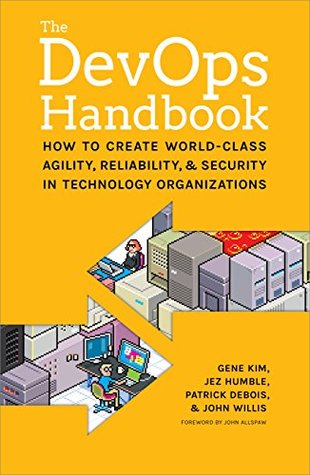More on this book
Community
Kindle Notes & Highlights
by
Gene Kim
Read between
April 16, 2018 - September 15, 2019
Jeffrey Immelt, CEO of General Electric, stated, “Every industry and company that is not bringing software to the core of their business will be disrupted.”
In other words, as David J. Andersen, author of Kanban: Successful Evolutionary Change for Your Technology Business, quipped, “Stop starting. Start finishing.”
As Elisabeth Hendrickson, VP of Engineering at Pivotal Software, Inc. and author of Explore It!: Reduce Risk and Increase Confidence with Exploratory Testing, said, “When I headed up quality engineering, I described my job as ‘creating feedback cycles.’ Feedback is critical because it is what allows us to steer. We must constantly validate between customer needs, our intentions and our implementations. Testing is merely one sort of feedback.”
For instance, we may conduct a blameless post-mortem after every incident to gain the best understanding of how the accident occurred and agree upon what the best countermeasures are to improve the system, ideally preventing the problem from occurring again and enabling faster detection and recovery. By doing this, we create organizational learning. As Bethany Macri, an engineer at Etsy who led the creation of the Morgue tool to help with recording of post-mortems, stated, “By removing blame, you remove fear; by removing fear, you enable honesty; and honesty enables prevention.”
Dr. Spear observes that the result of removing blame and putting organizational learning in its place is that “organizations become ever more self-diagnosing and self-improving, skilled at detecting problems [and] solving them.”
“little fish learn to be big fish in little ponds.”
As part of its transformation initiative away from a monolithic code base in 2002, Amazon used the two-pizza rule to keep team sizes small—a team only as large as can be fed with two pizzas—usually about five to ten people.
When all developers are working in small batches on trunk, or everyone is working off trunk in short-lived feature branches that get merged to trunk regularly, and when trunk is always kept in a releasable state, and when we can release on demand at the push of a button during normal business hours, we are doing continuous delivery.
In addition to the above, when we are deploying good builds into production on a regular basis through self-service (being deployed by Dev or by Ops)—which typically means that we are deploying to production at least once per day per developer, or perhaps even automatically deploying every change a developer commits—this is when we are engaging in continuous deployment.
The strangler application pattern involves incrementally replacing a whole system, usually a legacy system, with a completely new one. Conversely, branching by abstraction, a term coined by Paul Hammant, is a technique where we create an abstraction layer between the areas that we are changing. This enables evolutionary design of the application architecture while allowing everybody to work off trunk/master and practice continuous integration.
“Ask a programmer to review ten lines of code, he’ll find ten issues. Ask him to do five hundred lines, and he’ll say it looks good.”
Dr. Laurie Williams performed a study in 2001 that showed “paired programmers are 15% slower than two independent individual programmers, while ‘error-free’ code increased from 70% to 85%. Since testing and debugging are often many times more costly than initial programming, this is an impressive result.
Pairs typically consider more design alternatives than programmers working alone and arrive at simpler, more maintainable designs; they also catch design defects early.”
Counterfactual thinking is a term used in psychology that involves the human tendency to create possible alternatives to life events that have already occurred. In reliability engineering, it often involves narratives of the “system as imagined” as opposed to the “system in reality.”
As Jesse Robbins, previously “master of disaster” at Amazon, likes to say, “Don’t fight stupid, make more awesome.”


